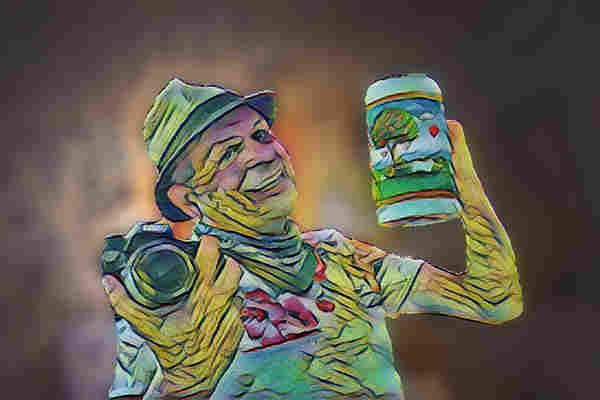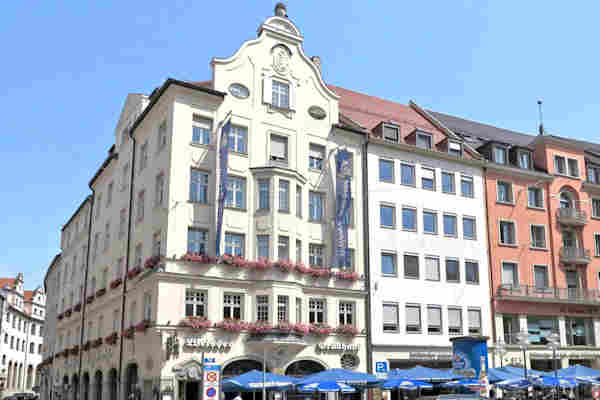Heinrich Hoffmann, a prominent figure associated with the Third Reich. He was a close ally of Adolf Hitler and also his personal photographer. However, this ended up being more of a curse than a blessing.
Heinrich Hoffmann was a skilled photographer, and through this, he helped fuel the Nazi movement. Ironically, the same pictures he took for this propaganda became the end of the movement.
Heinrich Hoffmann Early Beginnings
Heinrich Hoffmann, (1885-1957), was born into a family of photography. It was his father’s occupation and he grew up to naturally align with it. He loved being in the studio with his father as early as 11 years old. This way, he fell in love with the art.
Heinrich’s father found out that young Heinrich had a talent in photography, and he helped him fine-tune it. He took the boy under his tutelage and helped him develop more skills. When Heinrich came of age, he decided he has learned enough from his father. But he still wasn’t satisfied. He moved out of his hometown, Furth, to acquire more knowledge.
He apprenticed with famous photographers like Anita Augspurg and Sophia Goudstikker who were the founder of the first women company in the country, Elvira Studio. This duo had a major impact on the career of Heinrich Hoffmann. He learned a lot and became famous for his works with them.
The Next Step
After leaving Anita and Sophia’s Studio, Heinrich decided to continue his career in Great Britain. He became Emil Otto Hoppe’s apprentice. Hoppe was a well-known photographer and had enough faith in Heinrich, this brought him his first major break in 1908. EO Hoppe allowed him to cover a popular exhibition in London.
On getting there, a tourists’ balloon exploded. Heinrich Hoffman kept his cool while everyone was running helter-skelter and took a picture of the burning balloon. The next morning, Heinrich pictures made it to the cover page of the news.
Hoppe got credit for the balloon wreckage images since he sent Heinrich there. However, Heinrich got more gigs for his efforts as Hoppe allowed him to cover more reputable events. Some of his works in this period were the pictures of the Royal family, Scotland Yard images, and a host of other celebrities’ pictures.
World War I
After leaving Hoppe’s studio, Heinrich Hoffmann become his own boss. He went back to Germany and started out as a sole photographer. He also achieved his childhood dream of opening a studio in Germany. The studio opened in 1909 at SchelligstraBe in Munich. Heinrich was 24 by this time.
During the initial stages of World War 1 in 1914, citizens of Munich came out en-mass for a protest. The protest later became violet when musicians failed to play a song loved by the nationalists. In his usual fashion, Heinrich Hoffmann took pictures of this protest in the Odeonplatz. It later turned out that Adolf Hitler was among the crowd in the protest pictures that Heinrich took.
The Selected Ones
Heinrich Hoffmann was drafted into the military in August 1914 by the war commander. He was provided with the necessary documentation to work as a photographer during the war. At this time not more than seven photographers covered the war. Heinrich Hoffmann was the only Bavarian photographer among the seven.
Heinrich Hoffmann found the war to be extremely dangerous, especially at the war front, so he took pictures from safe distances. Some of these pictures didn’t depict the war action. They were images of soldiers having fun, eating or just chatting. However, published images.
The Nazis Movement
Things changed fast, months after the war started. Some of the soldiers were moved to the war front in the thick of the battle. Heinrich Hoffmann moved to war aircraft. There he took images from the sky. His pictures helped reveal the strategic positions of enemies and also gave ideas on the battleground landscape. He became a valuable asset to the military. Heinrich returned to his photography occupation after the end of World War I.
The year 1919 signifies the end of the revolution. Germany was severely hit with recession and inflation in this period. The currency in this period was the Reichsmark, and it lost a lot of value. Heinrich sold his studio to be able to cope with the recession.
Hoffmann took interest in politics and in 1920 he joined the NSDAP party as the 59th member. This was the beginning of his relationship with Adolf Hitler. The situation of Germany at this time was still bad, and Heinrich saw the party as his getaway card.
A personal Friend
Heinrich Hoffmann adored Hitler, he saw him as a role model. His photography skills helped him become closer to Hitler during the election campaign. He was charged with displaying the party in good light among the public and in the media.
Hoffmann shot a lot of pictures to help portray the Nazis as a party that is really interested in the public. He was instrumental to the party and brought up campaign ideas that were productive. He became Hitler’s personal photographer, displaying him as a happy and always smiling man which is the opposite of what he really is.
In one of his propaganda, he shot images of Hitler playing with little children. Hitler also gave emotional speeches that made the people become enthusiastic about him. This continued well after 1933 when Hitler came to power.
World War II
Heinrich Hoffmann earned a lot of fortune from being Hitler’s photographer, friend, and confidant. He also did some private photography in his spare time and owned the biggest press company in Germany.
Heinrich was always around Adolf Hitler during the tick of World War II. Hitler loved having him by his side because he was a bit of a jester. Hitler also tasked Hoffmann with taking care of his lover Evan Braun when the war got deadlier. That was how much he trusted Hoffmann.
When Adolf Hitler died, Heinrich Hoffmann had been his photographer for more than 20 years.
The Falling of Heinrich Hoffmann
After the death of Hitler, Americans began a raid of his close associates. They arrested Heinrich Hoffmann. His works served as pieces of evidence against other associates of Hitler. American Army arrested them.
The trial for war criminals began in 1946. They were all grouped into different factions based on their role in the war. Heinrich Hoffmann counted among criminals directly involved in the war. His group was charged to 10 years’ imprisonment.
Hoffmann was given a pardon. His sentence reduced to 4 years due to the confiscation of his illegal wealth and properties. After leaving prison, he contested the confiscation of his wealth. This trial took 6 years. Hoffmann was later refunded 20% of his wealth.
Heinrich Hoffmann finally died at the age of 72 in 1957.
Related Articles to Walking Beer Tour Munich

